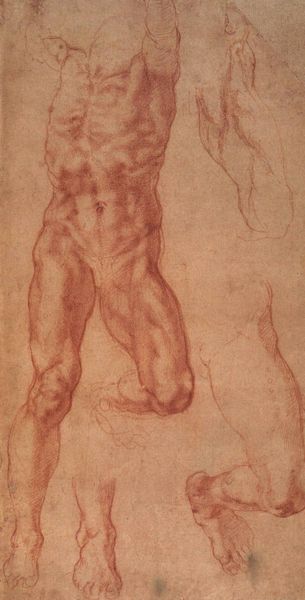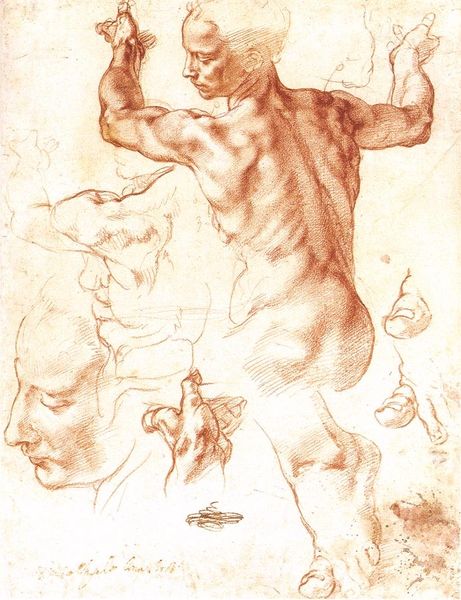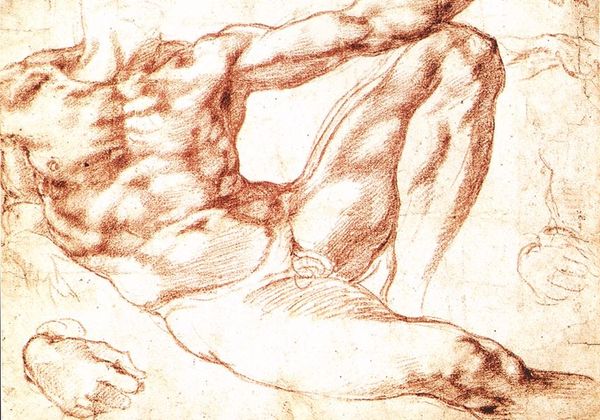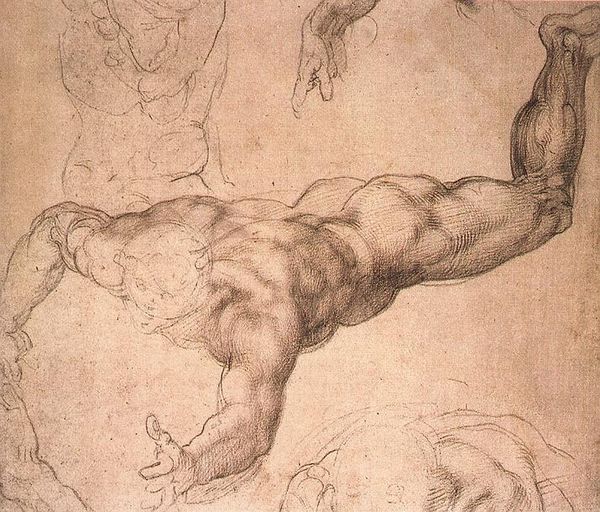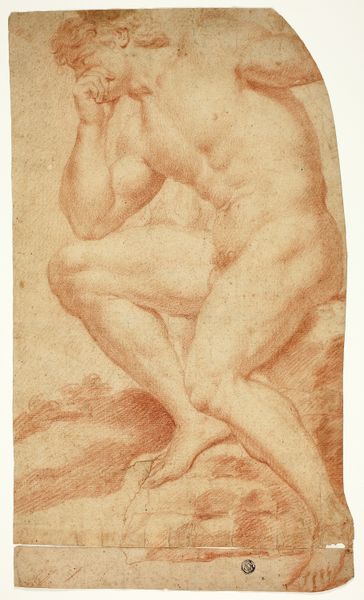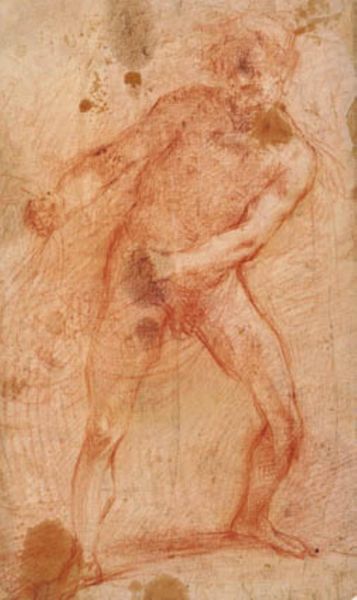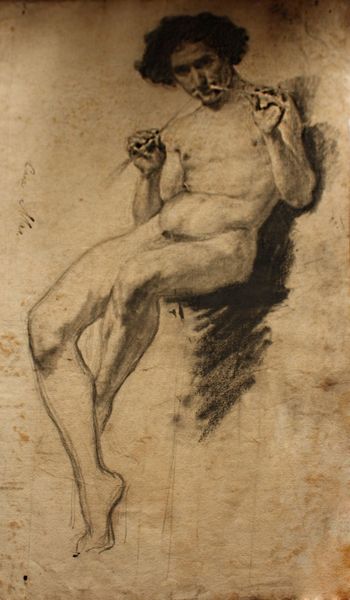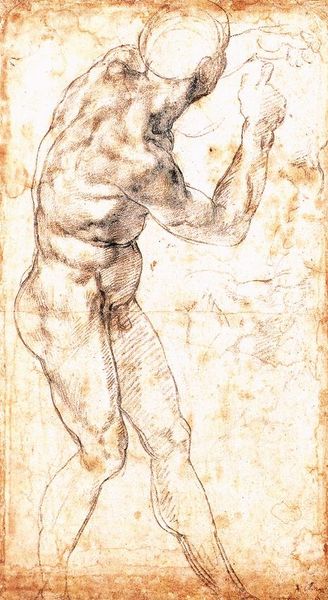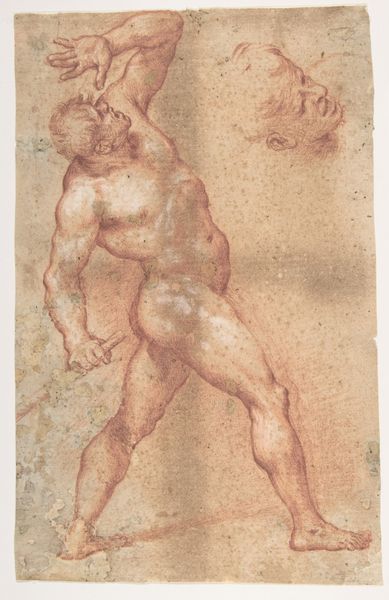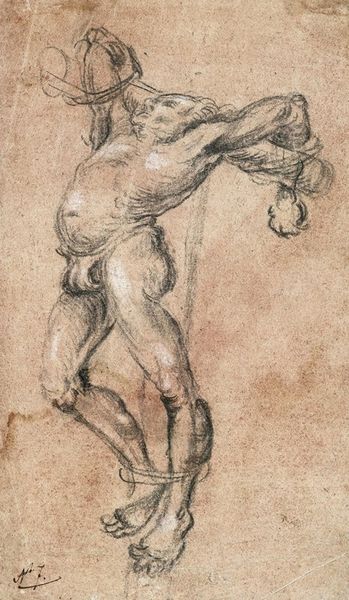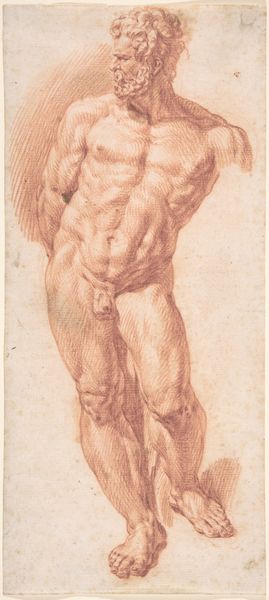
drawing, ink, pencil
#
drawing
#
high-renaissance
#
figuration
#
charcoal art
#
oil painting
#
ink
#
pencil
#
human
#
portrait drawing
#
academic-art
#
italian-renaissance
#
nude
#
male-nude
Dimensions: 27.9 x 21.4 cm
Copyright: Public domain
Editor: This is Michelangelo’s “Study for an Ignudo,” a drawing from 1508 currently held at the Teylers Museum. The figure seems so full of potential energy. What kind of preparatory role do these ignudi play? Curator: They are nude youths, typically framing the Old Testament scenes on the Sistine Chapel ceiling. But the term “ignudo,” meaning naked, isn’t just about anatomical form. It’s deeply embedded in Renaissance thought – a symbolic representation of the liberated soul, untainted by earthly concerns. Editor: Liberated, how so? I would not necessarily make the immediate symbolic leap to ‘soul’. Curator: Consider that the nude form was considered the most direct representation of humanity’s inherent potential. Michelangelo, through these figures, evokes the power of classical antiquity, blending pagan beauty with Christian ideals. Notice how muscular and idealized the body is. What does that physicality suggest to you about the spirit inhabiting it? Editor: Strength, obviously! Perhaps resilience, a kind of ideal form for humanity to aspire towards… Curator: Exactly! That resilience reflects the power of faith, the ability of the soul to endure and overcome earthly challenges. These aren't just pretty figures; they're embodiments of hope, designed to lift the viewer's spirit toward a higher realm. Can you see the visual echoes of classical sculpture now, informing that soaring message? Editor: Now that you point that out, definitely. I had initially taken the drawing more literally. It's easy to miss the deeper layers! Thanks. Curator: The past whispers through these figures if you know how to listen. And the beauty is that each new viewing reveals another layer, doesn’t it?
Comments
No comments
Be the first to comment and join the conversation on the ultimate creative platform.
